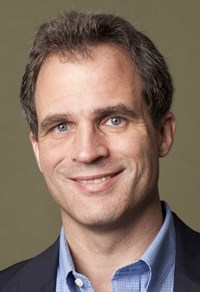We would like to thank Alliance magazine for selecting the SSIR article ‘Strategic Philanthropy for a Complex World’ as a topic for reflection among its readership and elevating the debate ‘out of the swimming pool’. We also appreciate the thoughtful comments of the blog contributors, who took the time to share some personal insights into the relevance of these concepts within their individual, often non-North American, contexts.
In Alliance’s final instalment in the series, Caroline Hartnell, Jenny Hodgson and Barry Knight provided their summary of key themes emerging from the blogs and individual emails they received. Below, we’d like to provide reflections on their three high-level comments and our own takeaways from the rich discussion.
1 ‘There is no such thing as a simple problem when you take context into account.’
We absolutely agree. The discussion about what constitutes a simple vs complex problem in different settings was fascinating and informative to our thinking. By way of background, we were fortunate several months ago to have Brenda Zimmerman, a leading thinker in complexity science and co-author of a fantastic book called ‘Getting to Maybe‘ (that we would recommend to anyone practising emergent strategy), come and speak with us at FSG about what it means to work in complexity. We came away from that discussion seeing this framework less about undergoing an academic ‘labelling’ exercise, but more as a tool to help understand the nature of a problem and how to make investment decisions with finite resources. Any complex problem has simple and complicated problems nested within, and any seemingly simple solution can become complex once you try to get uptake for a solution in different settings.
Blog contributors made the very important observation that the context for these social problems can influence the level of complexity – for instance, where the problem is less clearly defined or where the environment is more unpredictable (such as in a post-conflict context or where communities are not welcoming of a new healthcare facility). Our perspective is that by discussing the nature of problems themselves, funders might think differently about relative levels of investment in their solutions (eg to what extent do we need to invest in system fitness? When is co-creation with the beneficiaries and other key stakeholders the right approach?). As always, it was very helpful for us to read how others were interpreting these ideas, and gave us good food for thought for how we might be clearer moving forward in describing complexity with a particular emphasis on context.
2 ‘This debate will be less relevant in some contexts than others, but reflection on how philanthropy is practised is always valuable.’
We were pleased to see that the concept of emergence struck a chord with most of the respondents, and the shared perspective that continued debates on these topics are beneficial to the field. We appreciated that some of the contributors challenged our ideas given the context of their individual cities and countries. For instance, Ambika Satkunanathan rightly asserted that our assumption that foundations are insulated from financial and political pressures isn’t always accurate, particularly in repressive or undemocratic states. Upon reflection, it would seem in these conditions, the idea of working the positive attractors and being mindful of negative attractors would become even more critical, as foundations have to get creative about leveraging positive trends and energy (political or otherwise) to achieve their goals.
We would disagree, however, with the authors’ conclusion that the debate is less relevant in some contexts than in others. As our world gets even more complex, with even greater pressing social and environmental issues, finding effective approaches (new or otherwise) to address them transcends geography – the variation comes in the approach to execution. As stated above, and rightly observed by readers, context is key, and the assumptions in the SSIR article should be tested and approaches adapted to different circumstances.
3 The article told them little that was new because they were already practising what it describes as ‘emergent philanthropy’ – though they see it more as a common sense response to the complexity in which they work.
We suspect readers won’t be shocked to hear that this is not the first time we have heard the criticism that we are discussing ‘old wine in new bottles’ as the president of the Oak Foundation put it, or that this discussion is irrelevant because ‘we are already doing it’.
Since we agree that this is ‘common sense’, and that the concepts of emergence and complexity are not in and of themselves new, it begs the question: why are we still talking about it? Our response is that like so many things in life, there is often a disconnect between knowledge and action. If one takes emergent philanthropy merely to mean that foundations adapt their grantmaking to changing circumstances over time, that is of course common sense and widely practised. But we are suggesting something different, as noted by Michele Fugiel Gartner and Daniel Overall from the Trico Charitable Foundation in their recent Alliance blog post:
‘Emergent philanthropy could easily have struck us as “yup, doing that”because we were always open to change. But change is not emergence. [And that this work…] ‘requires different processes, communication and cultures.’
The unpredictable nature of social change means that foundations cannot know the answers to the problems they try to solve; that successful interventions cannot reliably be replicated; that randomized control trials will not provide the key to social progress; and that no funder or organization acting on its own can produce lasting large-scale change.
We are suggesting that working within complexity requires the grantmaking approach of many foundations to fundamentally change. Foundations cannot simply do their research and devise strategies in their boardrooms. Instead, they must undertake the messy and open process of collectively developing interdependent strategies together with civil society organizations, governments and corporations. And if foundation staff must balance accountability with improvisation, then their reporting relationship to the board must also evolve. Many foundations we know have not yet mastered – or even attempted – these challenges.
Other reflections
As we stated in our ‘Last Word‘ response in SSIR, our objective in the article was to use stories of impact to create a sense of urgency and to suggest practices that could complement existing approaches to strategic philanthropy – all in the hopes that it would increase the odds of improved outcomes. Several blog contributors have joined Alliance in urging the field to elevate the debate and share perspectives on the ‘how to’ aspects of the article – the organizational structures, board and staff dynamics, and sensing and evaluation functions necessary to successfully navigate complexity. Like many in the sector, FSG is eager to learn from you, and would be happy to serve as another platform for you to share your story with the field.
Since our article was published, foundations have reached out asking difficult questions about how to change their practices. Some of the questions we’ve posed to them for consideration are:
- Co-creation Beyond one-off conversations and grantee meetings, how can you intentionally engage the community in strategy development?
- System fitness Who are the major stakeholders in the system you hope to influence? If you were to draw a picture of the system, how strong are the connections among actors? How and to what extent would making investments to actively strengthen the system enhance the effectiveness of your individual grants?
- Amplifying the attractors How do you keep your finger on the pulse of what is happening in your community beyond interactions with grantees? How do you leverage positive or dampen negative trends the field (eg policy changes, political dynamics, funding flows) to accelerate potential for impact? How do you engage your board in discussing these opportunities?
- Organizational dynamics How do you discuss and learn from failure at your organization? Are conversations in the board room focused on accountability to implementation or accountability for learning? On what is working? On what isn’t?
As a final thought, Christine Letts commented in her ‘Up for Debate’ response that ‘Perhaps the most important beacon that we all should be seeking is the impact that we all talk about so much.’ In our mind, that means ongoing reflection and willingness to adapt behaviour. Our earlier thinking on strategic philanthropy still holds; we are not saying ‘no, but’ but rather ‘yes, and’ when it comes to concepts such as clear goals, data-driven strategies and the use of evaluation for ongoing learning. These are still the bedrock of planning for impact. But we’ve learned over the years that greater intentionality towards investments in co-creation, system fitness and leveraging positive energy will help accelerate achieving that impact.
Thank you for your continued engagement on this important topic and to Alliance for bringing a much more global perspective to the debate. We look forward to hearing your stories and to encouraging more dialogue around what it means to be a funder in a world of complexity.
John Kania is a managing director at FSG, where he oversees the firm’s consulting practice. Mark Kramer is a co-founder and managing director of FSG, and a senior fellow at Harvard’s Kennedy School of Government. Patty Russell is a managing director at FSG, where she leads the catalytic philanthropy practice.







Comments (1)
This discussion has been a fruitful stirring of the philanthropic pot and I appreciate the thoughtful responses of FSG to the equally thoughtful critiques. I was especially pleased to see Mark Kramer's reference to the truly terrific book Getting To Maybe and to the work of Brenda Zimmerman and her colleague Frances Westley, two important Canadian thinkers in the field of emergent strategy. In a June blog post http://pfc.ca/2014/06/philanthropy-complex-world/ on the original article, I noted that Zimmerman and Westley showed in Getting To Maybe how Canadian social innovators, supported by their funders, have used emergent approaches to come up with innovative ways of tackling complex social problems. This is not unusual in the Canadian context, in which foundations have not typically been of a size or had the inclination to follow highly structured strategies. Over the last decade, Westley, Zimmerman and others interested in social innovation have developed ideas about making social change that emphasize concepts such as fluidity, and cycle metaphors taken from biology such as creation, growth, destruction and regeneration. Emergence fits naturally into this way of thinking. I think that the small but innovative Canadian philanthropic community is increasingly interested in tackling complex social problems and is using emergent thinking to do it. It’s just not labeled that way. Many Canadian funders are open to connection with each other and with their community partners in ways that allow them to spot “emerging” possibilities and to act on them. While Mark Kramer and his colleagues are spotlighting the new possibilities offered by a more fluid emergent strategy approach, this has very familiar echoes to Canadians, as Zimmerman, Westley and FSG have so clearly noted.